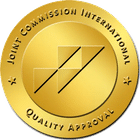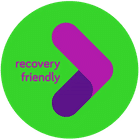Detoxification, commonly called detox, involves eliminating substances such as drugs or alcohol from an individual’s system following consumption. Also known as withdrawal treatment, detox is often the first step toward recovery for many individuals, but it can be challenging to accomplish without the proper support and resources. But how does detoxification help treat substance use disorders? At GateHouse Treatment, we work with several excellent detox facilities and can help you find the right one before beginning treatment at one of our facilities.
As the term ‘withdrawal treatment’ suggests, detoxification acts as a way to remove addictive toxins from the body while easing withdrawal symptoms and preventing relapse. To fully understand the importance of this first step toward recovery, knowing the dangers of withdrawal on the body and mind is paramount when beginning the detoxification process.
What is Withdrawal?
Withdrawal encompasses the physical and mental effects an individual experiences once they stop using or reduce the intake of substances such as drugs or alcohol. When people regularly abuse such substances, their neurons and hormones are greatly affected, which alters their entire brain chemistry. As soon as these substances are no longer present in the body, that person’s chemistry balance is thrown out of sync, making them susceptible to various symptoms that can be unpleasant and potentially dangerous or life-threatening.
Some prevalent symptoms of withdrawal include:
- Changes in mood and appetite
- Chills and shakiness
- Irritability and restlessness
- Congestion
- Fatigue and sleeping difficulties
- Muscle pain
- Sweating
- Nausea and vomiting
- Tremors
- Depression
Many of these withdrawal symptoms vary depending on the type of abused substance and the duration of abuse. More severe symptoms can include hallucinations, delirium, and seizures. Due to the dangerous nature of these symptoms, a person should speak with their doctor as soon as they identify any of them to minimize their effects safely.
How Does Detox Work?
There are multiple ways in which a person can go through the detoxification process, often tailored to meet their specific needs. While the result is the same, these detox methods vary in their approach and depend on many factors, such as the type of substance, the degree of the SUD, a history of severe withdrawal symptoms, and other health conditions.
At-Home Detox – Healthy individuals with little to no history of extensive substance use may prefer an at-home detox program. This option may also benefit those without insurance or who cannot afford treatment. Much like outpatient detox programs, at-home detoxification does not provide the support and supervision often necessary for a full recovery. Instead, individuals must go at it alone or, at the very least, under the supervision of friends or family. This method is usually not recommended for any severe substance use disorders.
Outpatient Detox – Some facilities may offer outpatient detoxification if the severity of substance use is minor. In these cases, patients who may not require much supervision only need to regularly check in at their doctor’s office or a health center at scheduled intervals; this allows patients to return home daily, offering flexibility within their schedules. However, the risk of relapse and intensity of withdrawal symptoms is much higher without constant supervision.
Inpatient Detox – In this method, individuals stay at a facility during their detoxification process and receive constant peer support and supervision. Facility professionals then choose the best course of treatment and may administer medication if necessary. Many consider this the safest form of detox but also the most expensive. However, some impatient detox programs serve people who cannot pay or don’t have insurance.
Medical Detox – Many facilities use medical detox to refer to individuals in a clinical setting. Medical detox often uses various medications to safely taper a person off a substance while reducing and managing withdrawal symptoms. A medically-assisted detox process is ideal for users of opioids, benzodiazepines, and alcohol.
Five Medications Used in Medically-Assisted Detox
1. Methadone – Many opioids, such as heroin, are short-acting agonists; therefore, prescribing and administering longer-acting opioids like methadone allows patients to take fewer doses to keep their brain receptors engaged. Methadone doses are typically administered once per day to prevent opioid withdrawal symptoms. However, methadone is a Schedule II controlled substance and requires medical monitoring to avoid abuse.
2. Naltrexone – This medication works particularly well for alcohol and opioid use disorders. There is little risk of abuse, minimal side effects, and significant ease of administration. Naltrexone works by blocking the activation of brain receptors engaged under the effects of a substance, much like methadone. One difference with this medication is that patients should only receive it after abstaining from drug use for at least seven days or after completing a typical medical detox process.
3. Buprenorphine – Unlike methadone, buprenorphine doesn’t fully activate brain receptors and has much less potential for abuse. It works well to reduce withdrawal symptoms and cravings. Often buprenorphine is combined with another drug called naloxone. Some medications, such as Suboxone, contain both buprenorphine and naloxone.
4. Acamprosate – Popular in treating alcohol use disorder (AUD), acamprosate reduces the physical effects of withdrawal symptoms. It helps maintain brain chemistry in patients with AUD and is excellent for treating alcoholism. Acamprosate protects a patient’s brain from overexcitation when detoxing from alcohol and dramatically decreases the chance of relapse.
5. Disulfiram – Similar to acamprosate, disulfiram is a viable choice when detoxing from alcohol. This medication turns off an enzyme needed to metabolize ethanol; if a patient drinks alcohol with disulfiram in their system, they will experience an unpleasant reaction that may include blurred vision, difficulty breathing, chest pain, nausea, and vomiting.
What Happens When You Detox in a Program?
When prospective patients check in at a high-quality detox center, their process begins with a conversation with a detox expert who will help them understand what to expect. From there, they will complete the necessary paperwork and registration forms before being assigned to a room. Patients will then meet with their treatment counselors and other medical staff, who accompany them throughout their detox program.
The medical detox process consists of three steps: evaluation, stabilization, and guidance into treatment. During the evaluation, a medical staff member will examine the patient to determine which substances are present in the body and to what extent. They will also check for any co-existing mental health issues or physical disorders.
Stabilization refers to the actual detoxification process, which the medical staff will supervise. Medical professionals will administer prescribed medication at this time and provide an overview of a patient’s recovery process following detox. The stabilization process varies depending on the severity of the patient’s SUD and can range anywhere from a few days to over a month.
Once the stabilization and detox process concludes, the treatment center staff will prepare the patient for an addiction treatment or rehabilitation program. Since detoxification only focuses on the physical dependency on substances, the following treatment program will address the psychological aspects, often including counseling and other behavioral therapies.
Let GateHouse Treatment Help You in the Detoxification Process
Identifying the need for detoxification is the first step toward a meaningful recovery. Since a positive detox process means an even more positive rehabilitation process, evaluating all aspects of your situation before choosing a clinic is crucial. Let GateHouse Treatment facilitate this process for you by giving us a call.
We are committed to offering individuals the detoxification resources they need for a healthy and long-lasting recovery, whether it’s a referral or a rehabilitation program following their detox process. If you or someone you know needs detox or an ensuing treatment program, call us at (855) 448-3588 or visit our website for even more details on options.
- Cymbalta Withdrawal: Causes, Symptoms, And Management - October 12, 2023
- Boredom in Recovery: 5 Tips to Avoid Relapse - October 6, 2023
- Overconfidence and Rehab: Avoiding Relapse - October 4, 2023




